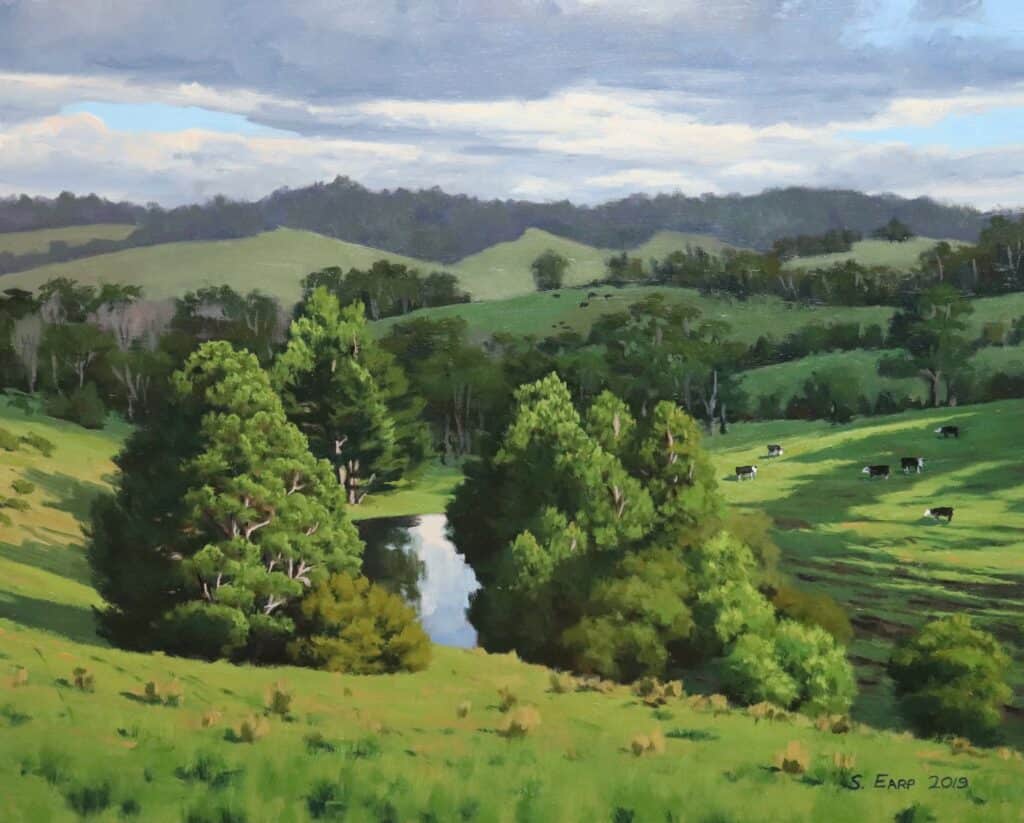This article may contain affiliate links, please read my affiliate disclosure for more information
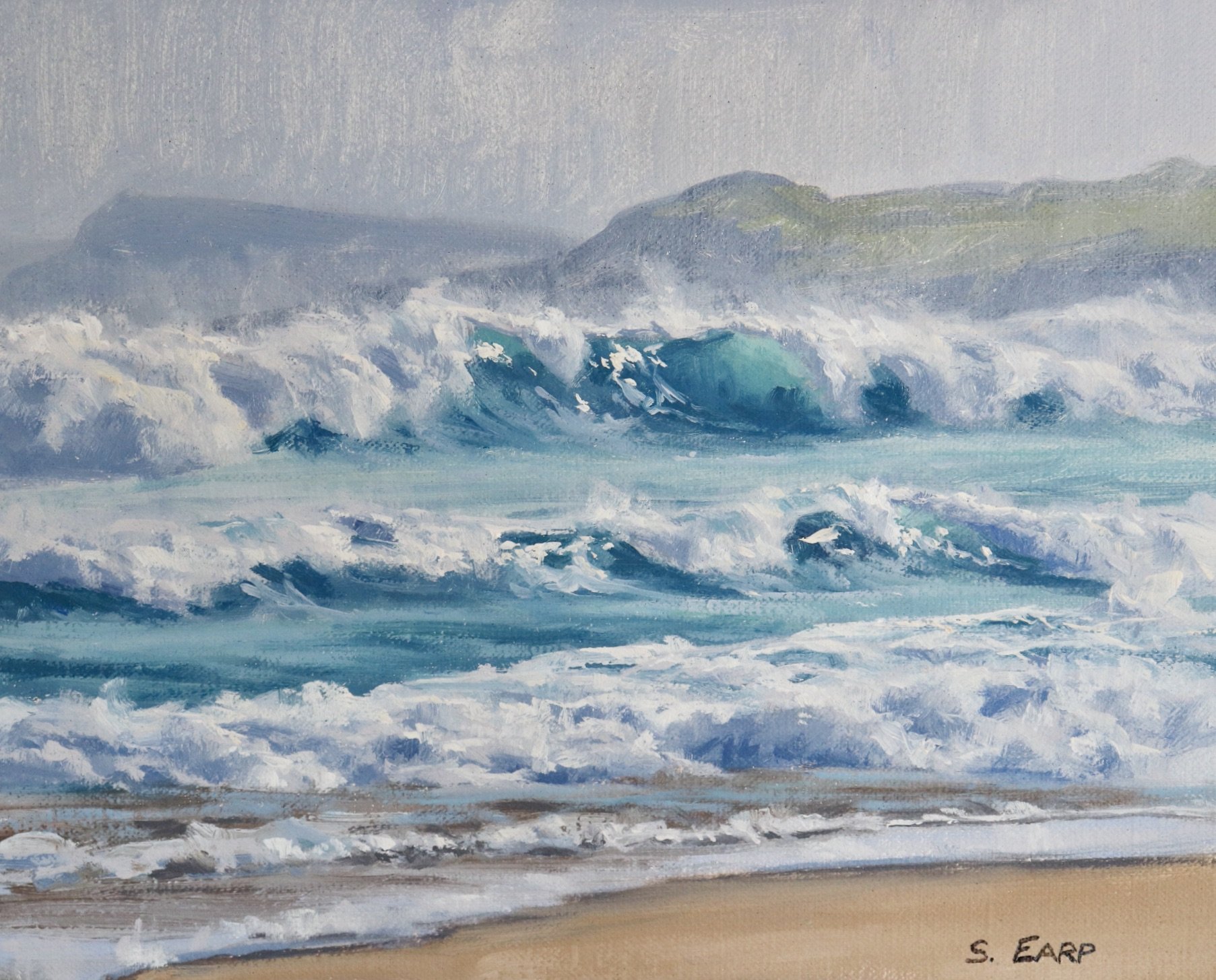
In this painting demonstration, I show you how to paint ocean waves in a seascape that is inspired by crashing waves on a beach.
Suitable for oils and acrylics.
Reference Photo
Please feel free to use or copy this photo if you would like to have a go at painting this artwork.
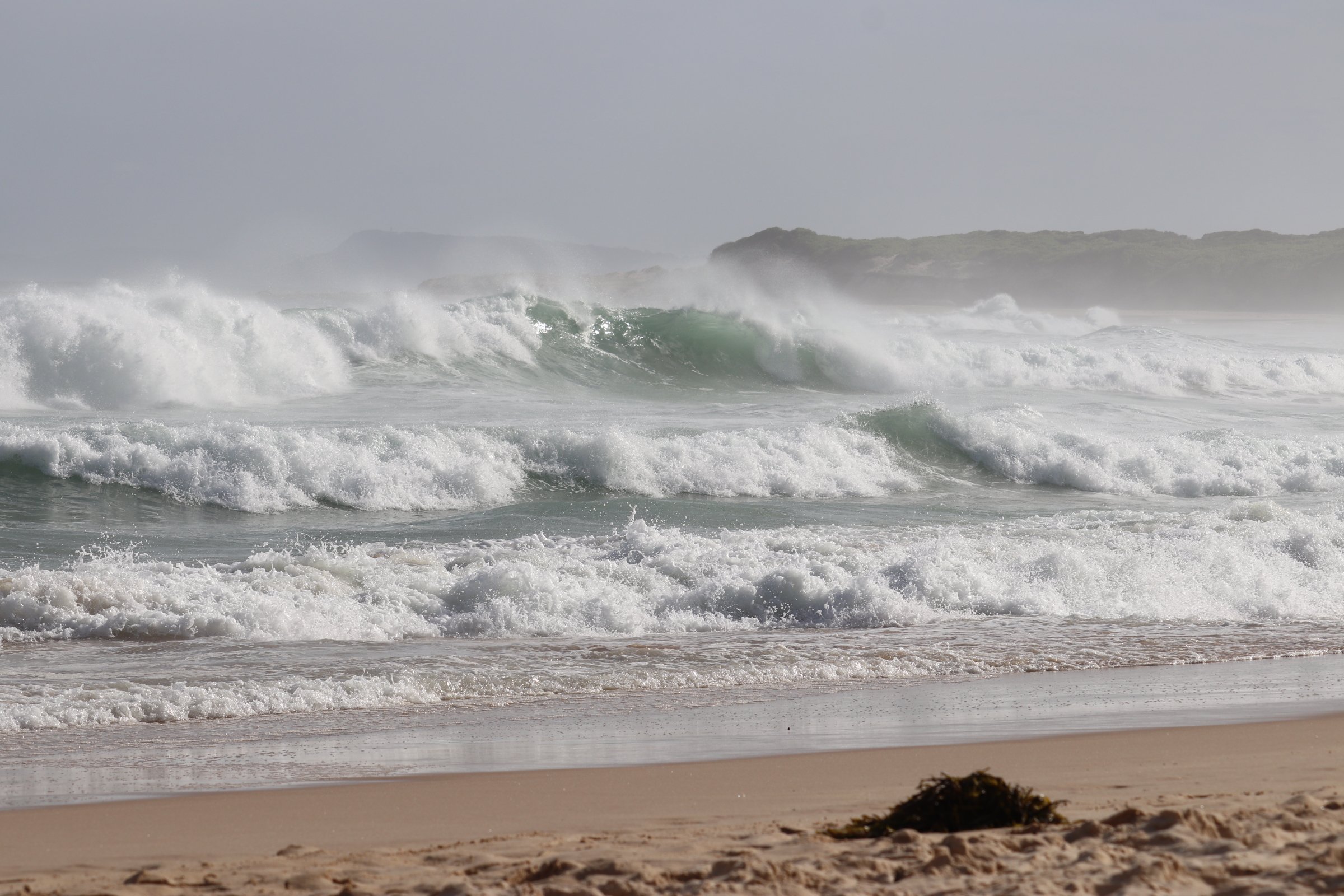
Composition
The translucent area of the breaking wave is the main focal area. This composition is fairly simple as it is intended to be a study of ocean waves.
When designing a composition for a painting avoid having centred objects, centred lines and repeating masses as this will spoil the composition. Here you can see the focal area is to the right of the centre and there is a high horizon line.
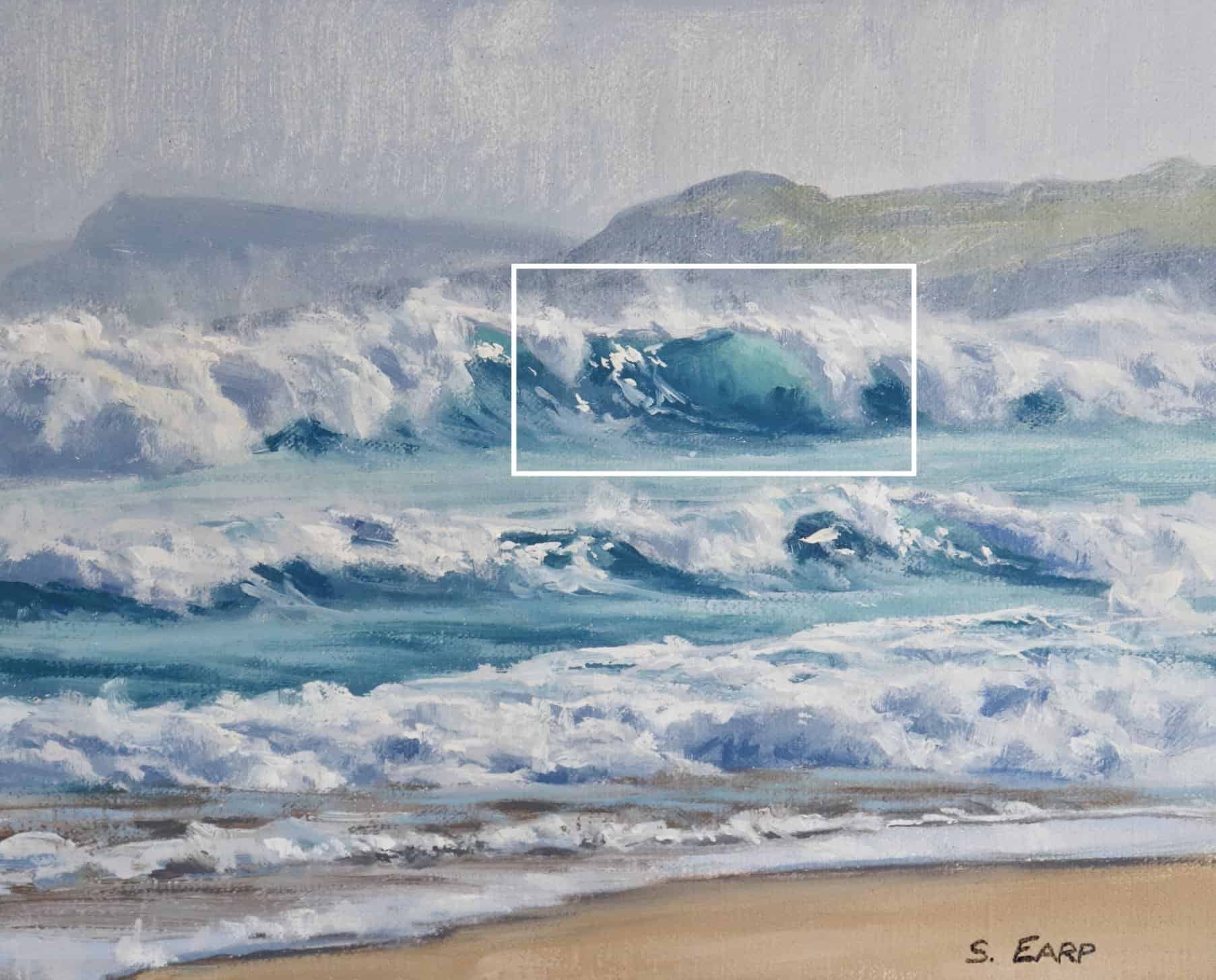
Colours
I painted this artwork using oil paint and the colours I used in this painting are as follows:
- Titanium white
- Burnt sienna
- Yellow ochre
- Cadmium yellow
- Cadmium red light
- Alizarin crimson
- Ultramarine blue
- Phthalo green
Brushes
Here is a list of the brushes I used in this painting:
- No.5 flat
- No.3 flat
- No.2 flat
- No.3 filbert
- No.1 round
- No.0 round
- 1/4” ivory dagger

Painting Demonstration
I painted this artwork on oil primed, medium-weave Belgian linen that is mounted to a panel. The painting itself measures 8” x 10”.
I sketched the composition using a No.1 round brush with burnt sienna mixed with Liquin Original (Liquin). I am using Liquin as a medium to thin the paint and it also has the advantage of speeding up the drying time.
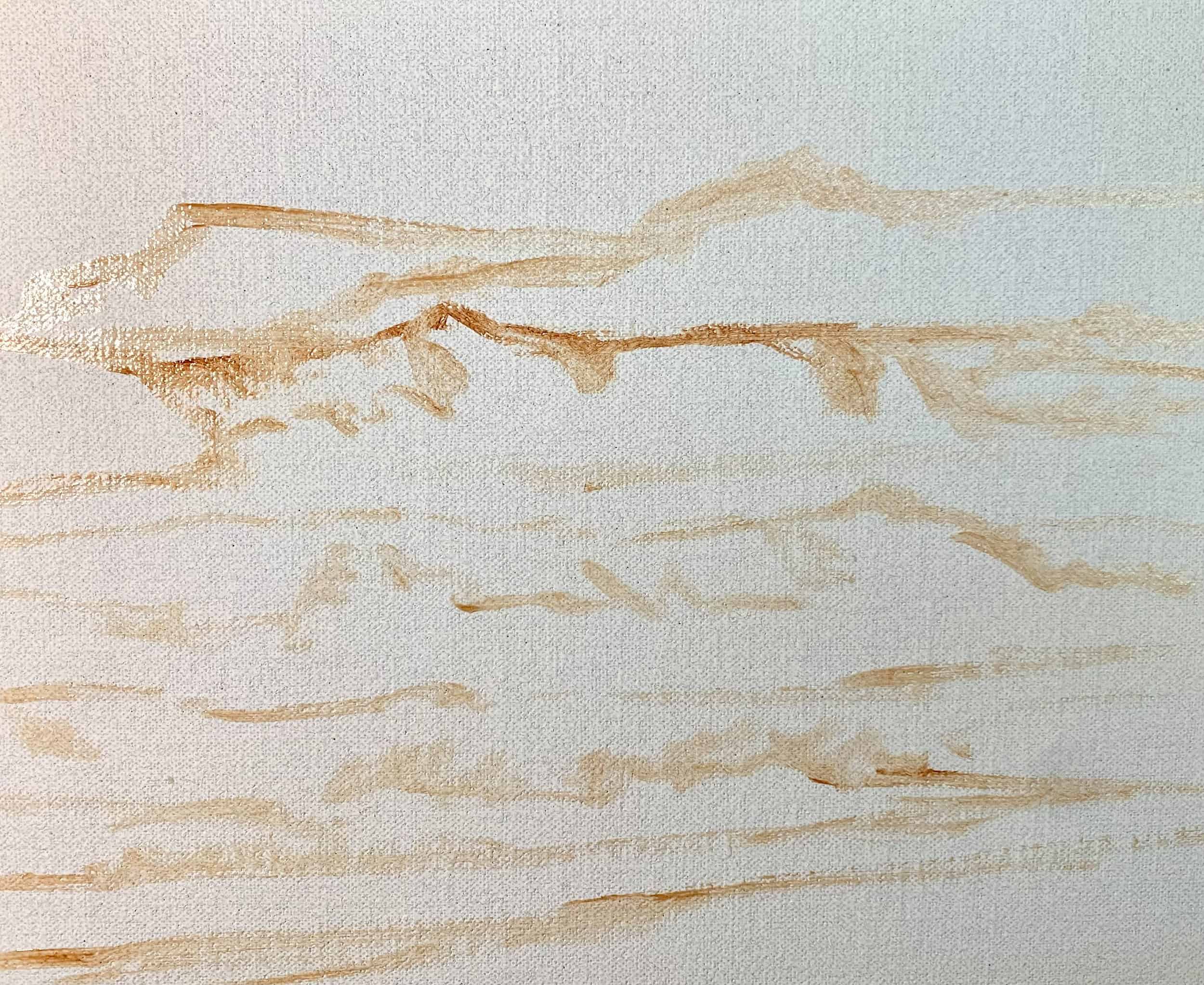
Paint Your Dark Values and Shadows First
Whenever I start a painting I always identify where the dark values and shadows are first in the scene I am painting. Value refers to how light or dark a subject is and by painting in the dark values first I personally find it is much easier to create atmospheric perspective in my paintings. It also makes it easier to add the areas in light and to get the saturation of your colours correct once you have painted your dark values.
I started this painting by blocking-in the sky, cliff shadows and the shadows in the breaking waves using varying mixes of ultramarine blue, burnt sienna, titanium white and a little alizarin crimson. Where I need to make the value of the colour darker I used less titanium white in my mixes.
For the shadows in the breaking waves, I used more ultramarine blue and less burnt sienna in my mix.
ARE YOU STRUGGLING WITH YOUR PAINTING?
JOIN MY ONLINE ART SCHOOL AND UNLEASH YOUR INNER ARTIST.
- Step-by-Step Painting Tutorials
- Helpful Tips and Techniques
- In-depth lesson notes
- Inspiring reference photos
- Instant access to all content, including videos, lesson notes, reference photos and more.
- A vibrant and friendly community, meet other members, ask questions, and share your art.
- Zoom meetings for Q&A’s, painting critiques and painting livestreams.
- Ideal for beginners and experienced painters.
- Lots of inspiration, help and support to take your painting skills to the next level.

Once I had painted the main areas of shadow I then painted the areas in the full sunlight. I painted the vegetation on the cliff using a mix of yellow ochre, ultramarine blue and titanium white as my base. I then added a little cadmium yellow, cadmium red light and phthalo green. I must emphasise that I only used a very small amount of these colours so as to not make them too saturated.
The colours I used for the breaking waves and water are a mix of ultramarine blue, yellow ochre, phthalo green and titanium white. Where the water is darker I used more ultramarine blue and yellow ochre in my mix and less titanium white.
For the translucent area of the breaking wave, I used yellow ochre, phthalo green and titanium white.
The beach area with the wet sand is a mix of burnt sienna, ultramarine blue, alizarin crimson and titanium white. The burnt sienna is the more dominant colour in the mix.


Once I had painted the breaking waves and the main body of the water I then painted the areas of the white water that is in the sunlight. When observing the white water and foam in the sea you will see that it is rarely white but there are lots of different tones present.
In order to make the waves look more realistic I have kept the water a little darker in value by mixing in a little ultramarine blue, burnt sienna and alizarin crimson. I then built up progressive lighter layers of paint in the white water and I save my lightest layers until the very end.
The sand is a mix of yellow ochre, alizarin crimson, ultramarine blue and titanium white.


Adding Details and Finishing The Painting
I let the painting dry so I could add more details to it and so I could build up the waves to make them pop. I spent this session adding more details to the waves and water but essentially using the same colours that I used during the blocking-in stage of the painting.
One of the main things I wanted to emphasise in the breaking waves was the direct sun reflecting off the water as the waves barrels over. The sunlight reflection is the lightest value in the painting and I used a mix of titanium white and a little yellow ochre. By keeping the white water tonally a little darker it is helping to emphasise the sunlight reflections and sparkles in the water.
I painted sea mist and spray coming off the tops of the waves using a mix of titanium white and a little yellow ochre and I dry brushed the paint on. I used no medium in this paint mix.

Final Note
I hope you enjoyed this written painting demonstration, however, I have only scratched the surface as there is way more to this painting. Check out the painting tutorial video where I show you how to paint this scene, available on my Patreon channel.
Want to Learn How to Paint Seascapes?
-
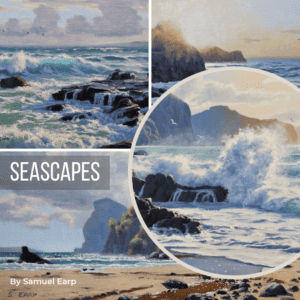 Product on saleSeascapes – Painting Tutorials – 6 Videos, Over 6 Hours of ContentOriginal price was: $75.00.$60.00Current price is: $60.00.
Product on saleSeascapes – Painting Tutorials – 6 Videos, Over 6 Hours of ContentOriginal price was: $75.00.$60.00Current price is: $60.00.
Discover the beauty of the sea and unlock your inner artist with my Seascapes painting tutorial video bundle.
Whether you’re a beginner or an experienced painter, my friendly instruction will guide you through each step of the process, from mixing the perfect ocean colours to capturing the essence of the sea with your brush strokes.
With my painting tutorial videos, you’ll learn the techniques and tricks used by myself to confidently create stunning seascapes that evoke drama and atmosphere as well as serenity and tranquillity.
This video bundle is packed full of useful information that will help you to improve your seascape painting skills and create successful artworks.
Bring a piece of the ocean into your home, download this video bundle now and start painting your own masterpieces today!
